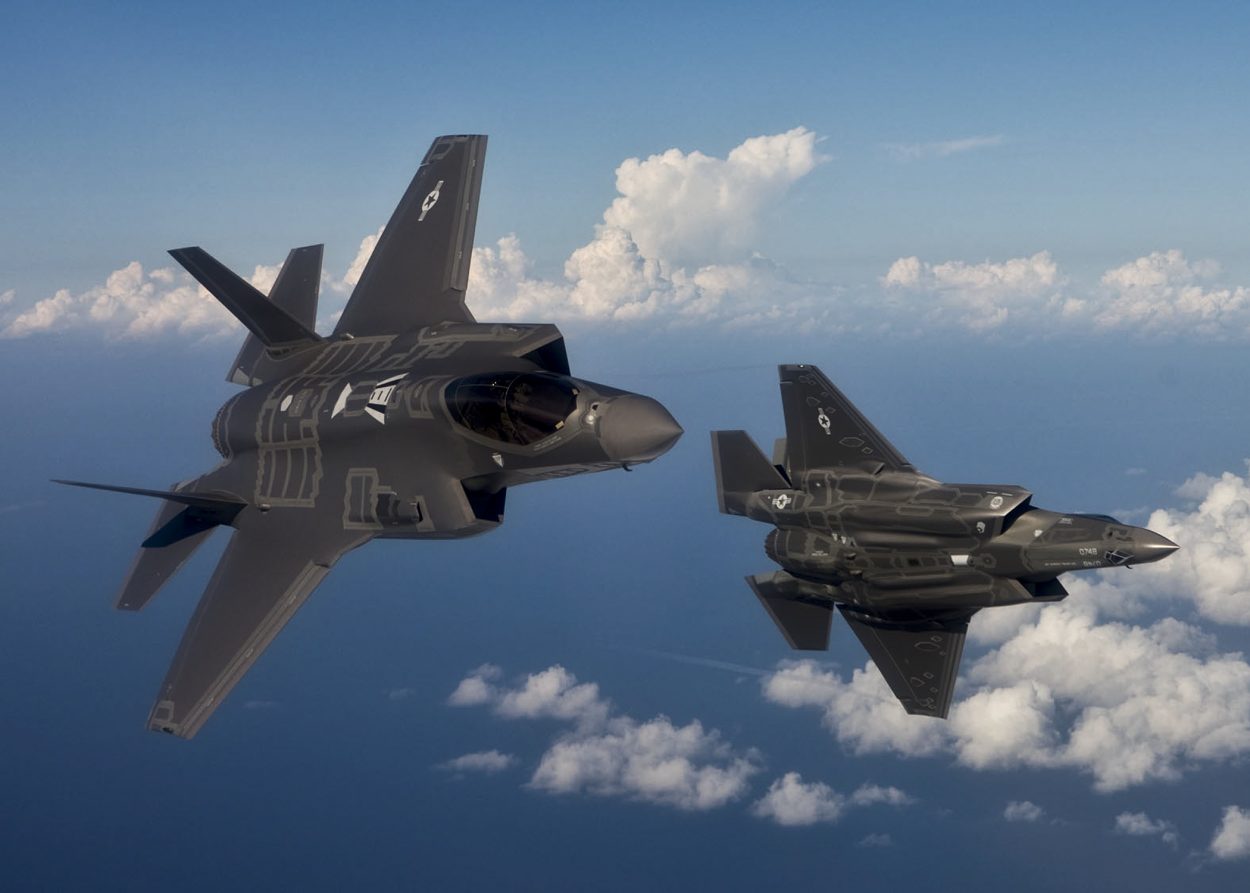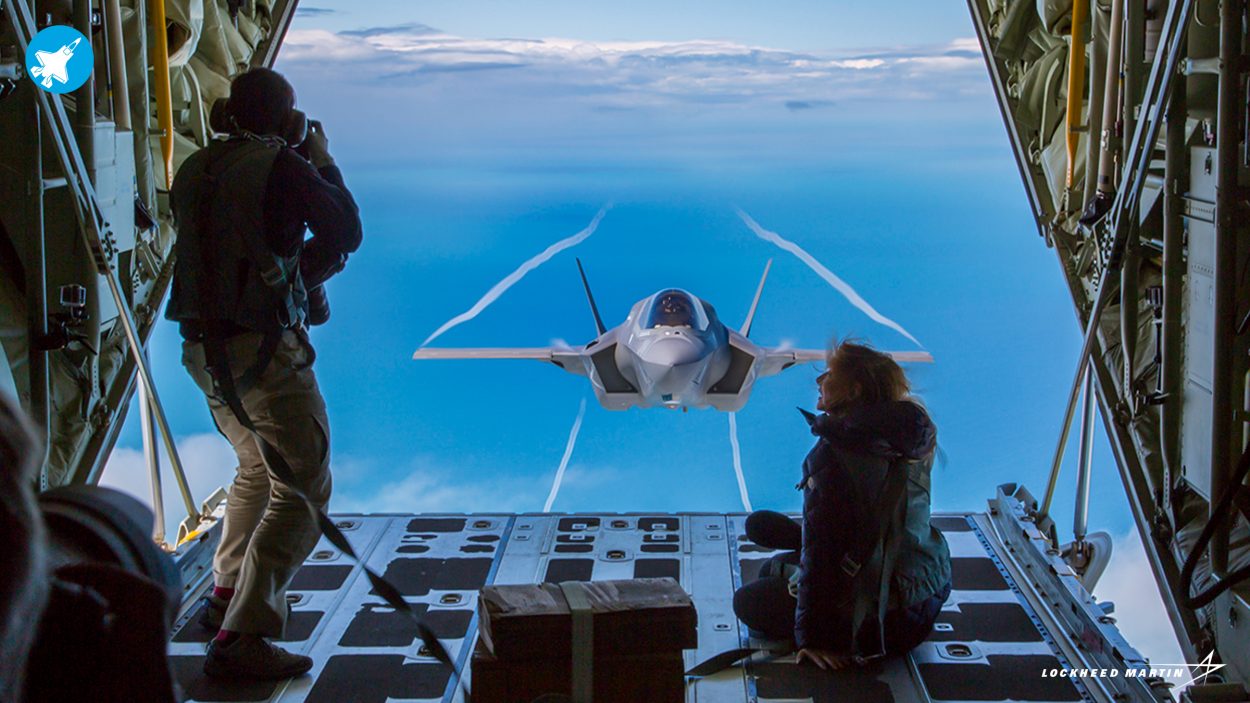The US military’s prized possession, the F-35 stealth fighter jet, could receive a major upgrade in the form of a new engine towards the end of this decade. This comes at a time when China is also mass inducting J-20 jets with indigenous engines.
Even though talks about shortcomings in its power plant have been around for a while, the idea to replace the existing engine with a superior one was largely put aside in the past due to cost and other factors. However, Congress may be able to compel the Pentagon to chalk out a plan for installing new engines in F-35 aircraft by the end of this decade.
Under the Adaptive Engine Transition Program (AETP), an altogether new power train is being developed, with many prototypes already being tested. The AETP engine, or some other option, is expected to provide a significant performance improvement to all three F-35 models, besides ensuring greater efficiency, reported The Drive.

The AETP is a program that intends to develop lightweight, flight-ready prototypes of three-stream adaptive engines. Airpower with enhanced range, reduced tanker need, and additional cooling air for thermal control would all be possible if such engines were deployed.
In comparison to the Pratt & Whitney F135 engine that currently powers the Lockheed Martin F-35 stealth fighter, the AETP is a research project by the US Air Force that aims to give a 30% increase in range, an 18% reduction in acceleration time, and enhanced thermal management, as previously reported by EurAsian Times.
The F-35A conventional takeoff and landing (CTOL), F-35B short takeoff/vertical landing (STOVL), and F-35C carrier (CV/CATOBAR) all use the Pratt & Whitney F135 engine.
The engine, also known as the heart of the stealth aircraft, delivers more than 40,000 pounds of thrust, unsurpassed low-observable signature, world-class thermal management, and the most modern integrated engine control system to ten militaries across the world.

The Pentagon had announced its plans to upgrade the F-35 fighter plane with a package of new weaponry, processing technology, and software over the next decade, while Russia and China developed their own fighters and air defense systems.
The announcement had come in the backdrop of P&W presenting a study to the F-35 Joint Program office regarding an upgraded engine in March this year.
F-35 Upgrades
John Tirpak, writing in Air Force Magazine, cited the National Defense Authorization Act (NDAA) for the fiscal year 2022.
The piece of legislation, which is yet to be cleared by the Senate, would compel the Secretary of the Air Force, in collaboration with the Under-Secretary of Defense for Acquisition and Sustainment, to chalk out a plan for installing AETP engines in F-35A CTOL aircraft no later than 2027.
Starting in 2027, the Secretary of the Navy would work with the Under-Secretary of Defense for Acquisition and Sustainment to develop a similar, but separate plan for adding an “advanced propulsion system” – which could be the final AETP design or an improved version of the existing Pratt and Whitney F135 – to F-35B STOVL and F-35C carrier-based variants.
The present F135 engines are experiencing several challenges, including a scarcity of engines, overheating and breakage of turbine blades, and earlier than projected service requirements.

Defense News had previously reported that it was unclear whether the Pentagon would seek to enhance the existing F135 design or develop a completely new propulsion system. As part of the Adaptive Engine Transition Program, the Air Force is currently evaluating three-stream adaptive engine prototypes from Pratt & Whitney and General Electric.
Prototypes of two AETP alternatives, the General Electric XA100 and Pratt & Whitney XA101, are now being tested. Both of these powerplants are intended to boost the jet’s range and persistence by roughly 30% and 40%, respectively, by reducing fuel use by about a quarter.

The plans to upgrade the engine of the F-35 variants have become imperative in the face of China projecting its J-20 and the Russians projecting their Su-57, both of which are proclaimed to be advanced stealth fighter jets.
However, the process is not devoid of bottlenecks and the expenses to be incurred in the production and installation are the primary ones.
Engine Upgrade, But At What ‘Cost’?
The cost of incorporating any new power plants in all three F-35 variants might be significant, causing a problem. There is undoubtedly a question about whether the Air Force, which is the largest current US operator of the Joint Strike Fighter, has the financial capacity to replace its existing and prospective fighters with fully new AETP engines.
Separate concerns have been raised concerning the costs of maintaining existing F-35As as well as upgrading them to the latest Block 4 standard, which includes increased radar and electronic warfare capabilities as well as the capacity to carry additional missiles. The upgrades are indispensable for these fifth-generation fighters in order to act as a force multiplier.
Air Force Secretary Frank Kendall had earlier expressed his skepticism about the new engines, arguing that a successor to the F135 should only be pursued if it is affordable and not otherwise.
“If we have to, we’ll take a serious look at the cost of moving forward, just like we did with the rest of the program…And if it’s affordable, I’d like to be able to pursue them,” Kendall had said at a conference.
However, the new law, when passed, will reportedly “compel” the secretary to go ahead with the process.
F-35As To Be The First Get New Engines?
Lt. Gen. Eric T. Fick, the F-35 Joint Program Office’s Program Executive Officer, had earlier said that the Air Force will be responsible for the development and production expenses of incorporating the AETP engine into the F-35A.
The F-35A currently has a range of roughly 1,350 miles without refueling, which would be increased to around 1,800 miles with the upgraded engine.
GE Aviation had earlier stated that it was in the advanced stages of developing an engine that would power the F-35A but it would not be able to power the F-35B Short takeoff/Vertical Landing variant of the fighter, as reported by Air Force Magazine in September this year.

Under NDAA, the Navy Secretary will have to draw a similar plan for F-35B engines as for F-35A so as to add a new propulsion system which would be the final AETP design. This indicates that the F-35As are going to be the first variant to receive the upgrade, somewhere close to the end of his decade.
Giving the F-35A longer legs, in particular, would be extremely beneficial for the Air Force as it prepares for potential conflict in the Indo-Pacific theatre, where the Chinese PLA is flexing its muscle.
An increased range has already been identified as a “must-have” characteristic as the service plans for its next fighter. A longer-range F-35A would not only be more suitable for operations in the Indo-Pacific region, but it would also lessen reliance on aerial tankers. Air combat planners have always considered the availability of adequate in-flight refueling planes.
The demands of the aircraft carrier operating environment for the F-35C and, above all, the swiveling nozzle and integrated lift engine for the STOVL F-35B mean the challenges of integrating a new engine are greater.
Both General Electric and Pratt & Whitney have previously stated that their AETP designs are incompatible with the F-35B. With that in mind, the NDAA may be anticipating the B-variant to get the improved F135 engine, while the F-35C would get either the same or another variant of the new AETP engine.
- Contact the author at sakshi.tiwari9555@gmail.com
- Follow EurAsian Times on Google News




